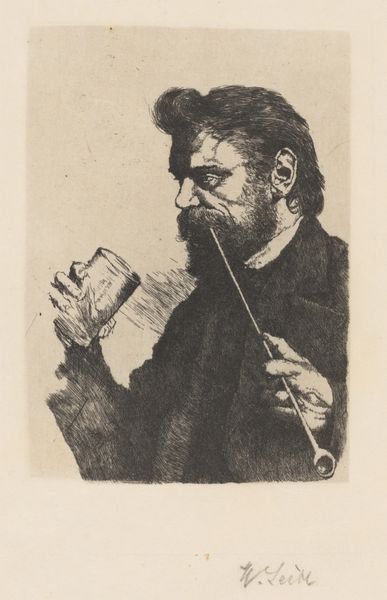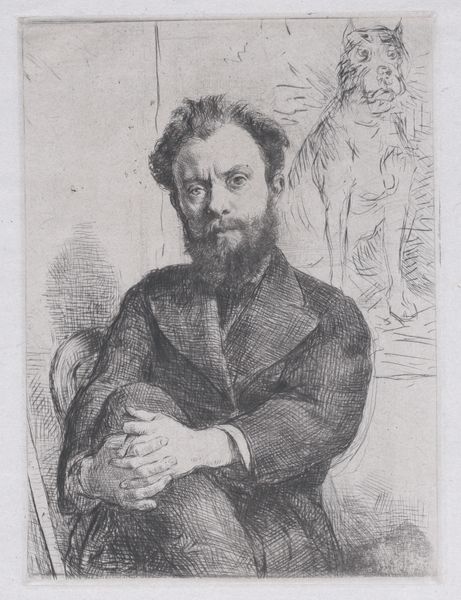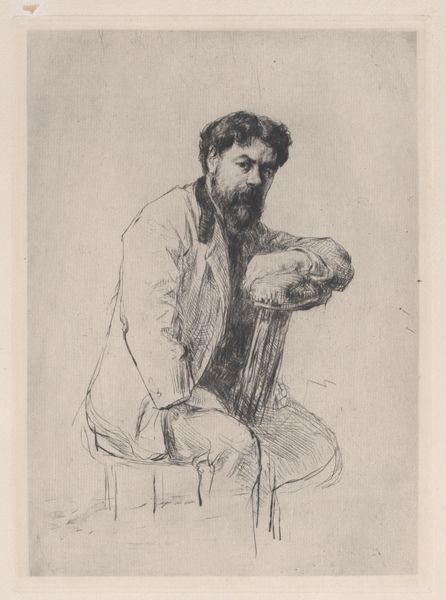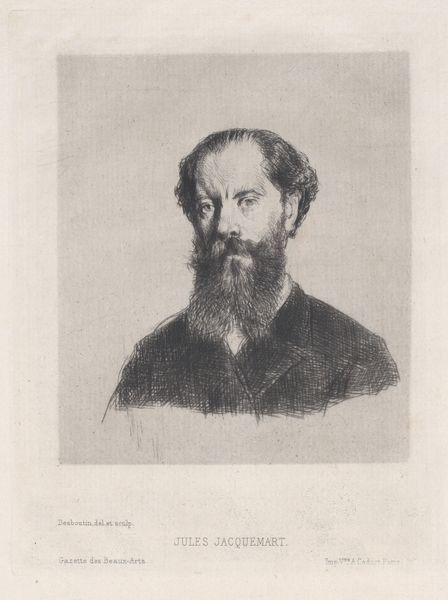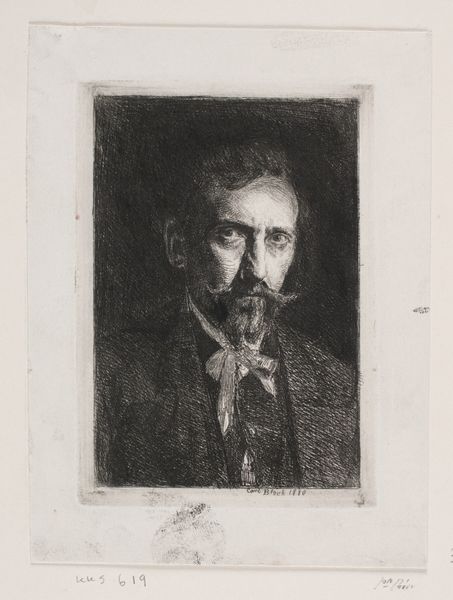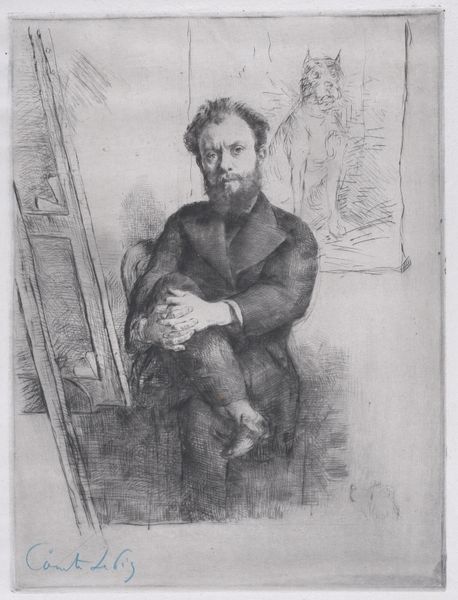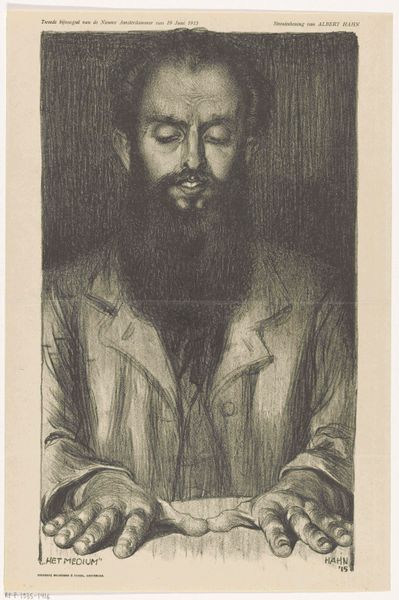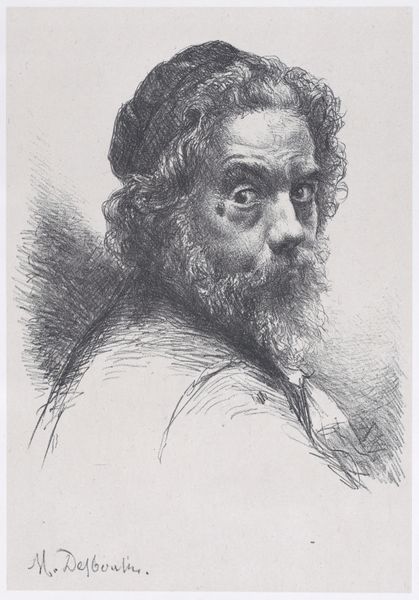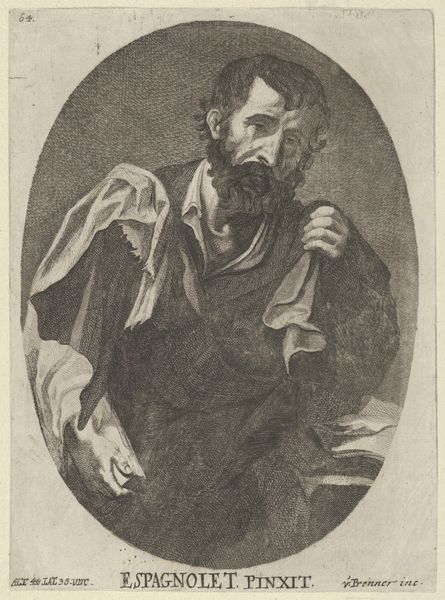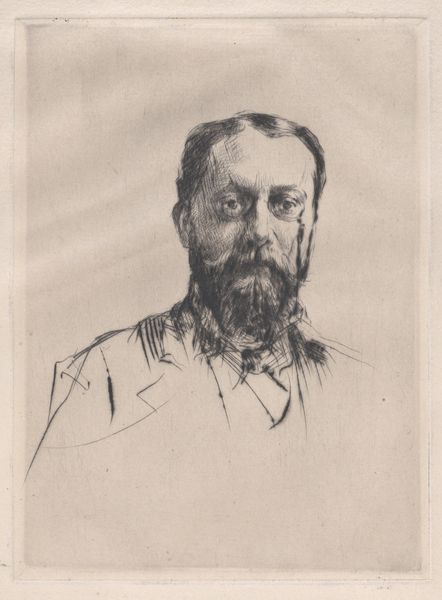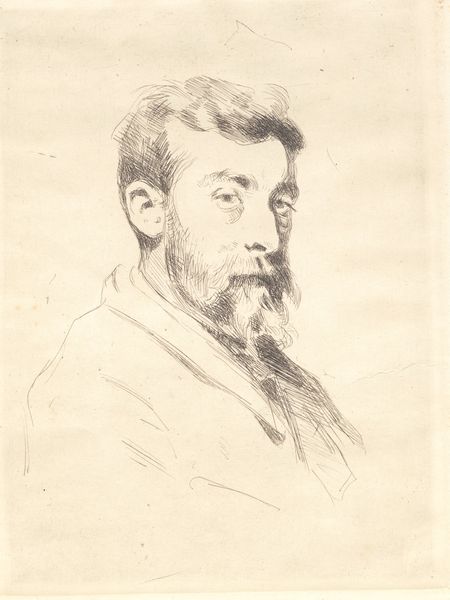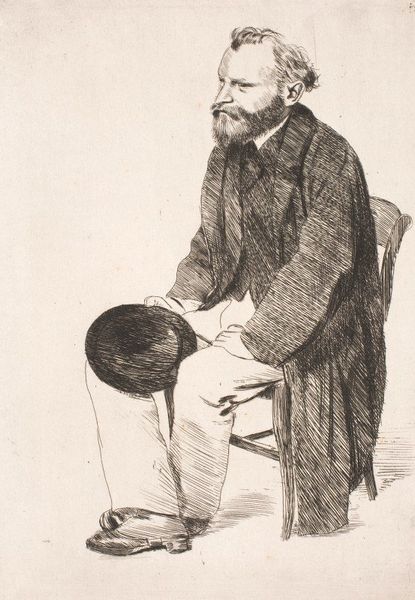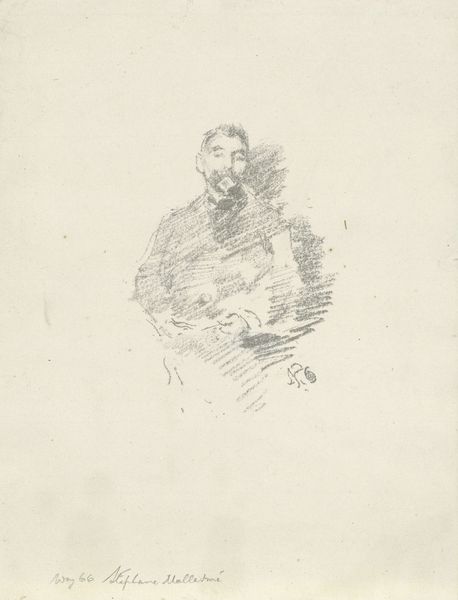
Dimensions: Sheet: 18 5/16 × 13 7/16 in. (46.5 × 34.2 cm) Plate: 7 11/16 × 5 13/16 in. (19.6 × 14.8 cm)
Copyright: Public Domain
Editor: So, here we have Marcellin Desboutin's "Portrait of Emile Soldi," an etching from 1876 currently residing in the Metropolitan Museum of Art. The intricacy of the lines detailing Soldi at work strikes me. What layers do you see within this piece? Curator: This print provides a crucial insight into the 19th-century artistic milieu, specifically the dynamics of artistic collaboration and representation. Soldi, himself an artist, is portrayed not simply as a subject but as an active creator, deeply engrossed in sculpting. Consider the male gaze in art history. Does this piece reflect or challenge these established gendered roles? Editor: I see what you mean; he's not just passively posing. He’s captured in a moment of active creation, adding a dynamic element to the traditional portrait format. It almost feels like Desboutin is acknowledging Soldi’s agency. Curator: Precisely. And by presenting him engaged in his craft, Desboutin subtly highlights the often-overlooked labor and skill involved in artistic production. Consider, too, the socio-economic context. This intimate portrayal offers a counter-narrative to the romanticized image of the solitary genius, suggesting the importance of artistic communities and mutual support. What impact do you think representing labor can have within society? Editor: That’s a powerful point. Highlighting artistic labor can destigmatize work in general and can shift the focus away from pure genius and toward process and dedication. Curator: Indeed. By acknowledging labor, we validate diverse forms of work and expertise. Reflecting on it now, what have you noticed about how identity shapes our reading of art? Editor: This has made me consider how easily we fall into established art historical patterns and also how artworks like this can disrupt those narratives. It underlines the importance of thinking about art within broader cultural and historical frameworks, especially with consideration to gender roles and labor value. Curator: Exactly, this is just one of many perspectives we can take when we engage with artwork.
Comments
No comments
Be the first to comment and join the conversation on the ultimate creative platform.
